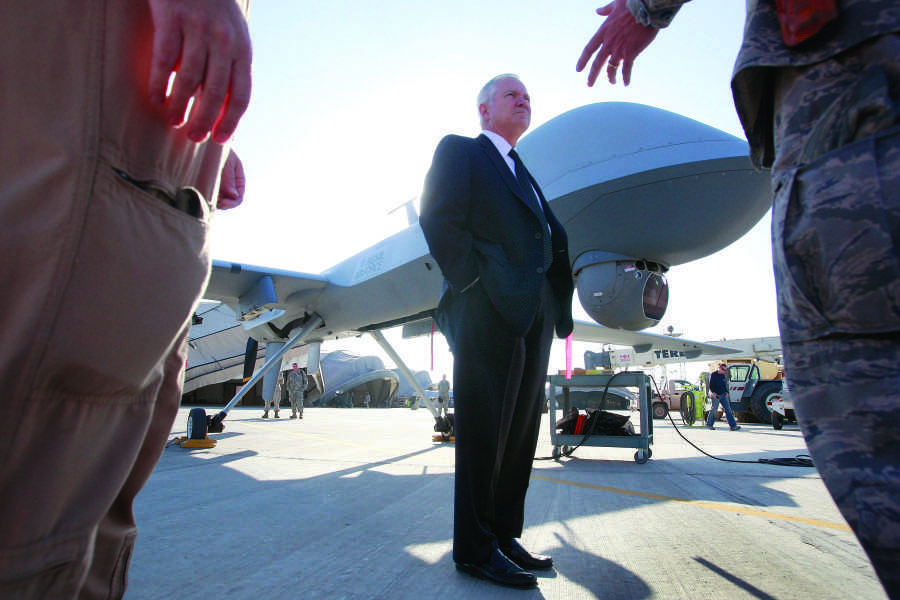Andres Echeverri Guevara, a graduate student in the College of Engineering, is building a drone programmed to automatically follow a moving target by itself.
Echeverri Guevara is working on the project as part of his master’s degree thesis. With help from a few other students, he and Henry Medeiros, assistant electrical and computer engineering professor, have been working on the project for the past year.
“So far, there are no drones that are capable of following somebody or something with computer vision,” Echeverri Guevara said.
In a video shot by Echeverri Guevara, the drone, or unmanned air vehicle, follows one of his friends, or the “target,” past the St. Joan of Arc Chapel. Once the target moves under the Olin Engineering building’s overhang, the drone has trouble following.
The drone can become confused when the target rotates or changes position quickly.
“The most confusing (for the drone) are backlights or if the sun is in front of your target,” Medeiros said.
Medeiros and Echeverri Guevara teamed up with an anonymous local startup that focuses specifically on video. The startup company is funding the project as a gift to Marquette.
The project operates in Marquette’s Computer Vision and Sensing Systems Lab in the College of Engineering. The lab works to create methods and systems with information gathered by multidimensional sensors, according to its website. The lab also collaborates with researchers from other outside fields.
Although there are drones on the market today that are capable of following moving entities when controlled by a computer or a remote, there are no commercially-produced ones that follow a target automatically.
So far the project’s money has gone to early test drones and electronics for building pieces and cameras. A few of the early test drones were refurbished Roombas, which had cameras attached to them and were used to test the concept of automatically following a target.
The drone sends images to a computer, which in turn processes the images and sends them back to the drone. Some of this process is done with WiFi, but the end goal is to create a computer small enough to place in a drone so the processing takes place internally.
“We hope that this is a pretty good prototype, but it’s hard to tell how much work is needed until we can sell this,” Medeiros said.
While the drone still needs work before it can be produced commercially, Echeverri Guevara hopes to one day see the invention used for surveillance and/or filmmaking purposes.
“You couldn’t give the transmitter to someone who was stealing something,” he said, noting that automatic drones provide technological advantages that remote-controlled drones cannot.
Drones have been increasing in usage and popularity in recent years. Most notably, the United States has been using them to carry out airstrikes against terrorist groups in Syria. Those terrorist groups include the Islamic State and the Khorasan Group, according to a CNN report.
The Islamic State responded to the airstrikes by sharing videos of them executing American hostages, one of which was Marquette alumnus James Foley.


